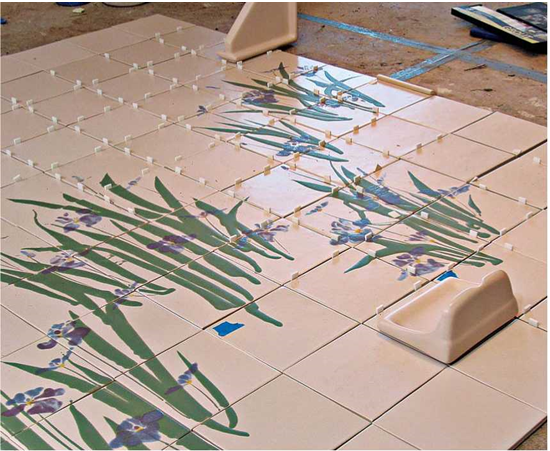ODD OR PROBLEMATIC SETTING BEDS
The beds described next may require special techniques and materials.
Plastic laminate countertops are acceptable setting beds if they’re solidly attached. Scuff the surface with 80-grit sandpaper, wipe with a rag dampened with solvent to remove grit and grease, and fill any voids. Then use an epoxybased thinset to bond the tiles. Alternatively, you can cover the old laminate with!4-in. backer board, adhering it with an application of epoxy thinset, and 1-in. corrosion-resistant screws spaced every 6 in. around the perimeter of the countertop and every 8 in. in the field. Sink screw heads flush, vacuum the backer board, and then use latex or epoxy thinset adhesive to bond tiles. Note: The recommended 1-inch screw assumes the combined thickness of the countertop materials is at least 1 ‘/ in.
Tiling over existing tile is a reasonable alternative to ripping it out, as long as the old tile isn’t cracked and is well adhered and the substrate is solid. Scuff the tile with a carbide-grit sandpaper. Vacuum the surface well, and wipe with a damp rag. Because tile surfaces are not perfectly regular and grout joints are recessed, first use a flat trowel to spread a layer of epoxy thinset to build up grout joints and level the surface. Wait a day. Then use a notched trowel to apply a setting bed of epoxy thinset.
Two caveats: Because of the risk of leaks, don’t tile over tiled shower-stall floors. Rather, tear out the old floor, replace the shower-pan membrane, and tile atop a newly floated mortar bed. Second,
 |
 |
don’t install tiles 2-in.-sq. or smaller over existing tile because they will telegraph the old surface’s irregularities. Instead, use large tiles.
Resilient flooring is acceptable if there’s a single, uncushioned layer that’s well adhered to a stable subfloor. Cushioned or multilayered flooring will flex too much to be a stable base for tile so, to be sure, use a utility knife with a hooked blade to cut out a cross-section of flooring in an inconspicuous spot.
Painted walls are okay as long as the paint is well attached and the wall doesn’t flex. Drill a small exploratory hole to determine the composition and thickness of the wall. If it’s drywall less than 58 in. thick, install a layer of 54-in. or 58-in. drywall over it. If the wall is traditional plaster (hard to drill through), it’s probably fine. Prep painted walls by sanding them with 100-grit sandpaper, and wipe with a damp rag. Use a latex thinset adhesive.
Other situations.
► Papered walls? Strip ’em! Vinyl wall coverings are supposedly tenacious enough to support tile, but it’s risky.
► Veneer paneling? Not recommended. Typically 54-in.- to 58-in.-thick, it will flex, cracking grout joints, and eventually dislodging tiles.
At this point we’ll assume that the substructure is sturdy and stable and the setting bed is in place. Careful layout is the key to a good-looking job, so don’t begrudge the time it takes. The right layout will align tile joints correctly, create a pleasant symmetry, allow you to cut tiles to size beforehand and—most important—enable you to set tile accurately and quickly while the clock is ticking for that fast-drying adhesive.






Leave a reply